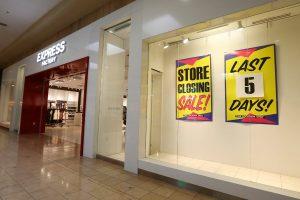Retail has been slowly moving online for years now, but that digital shift, along with other challenges, is certainly being felt in Phoenix.
The Valley is experiencing a windfall of commercial storefront vacancies, and members of the Phoenix City Council are working to address the issue and stave off the potential economic setbacks those vacancies might bring.
The issue was discussed at Wednesday’s Workforce and Economic Development subcommittee meeting, with Councilwoman Debra Stark leading the charge based on trends she’s seen in her district.
“Having vacant commercial properties can be problematic in several ways,” the councilwoman said in a statement. “Vacant properties can create opportunities for vandalism, graffiti and encampments. These conditions can lead to lower property values for the property and for surrounding land uses. Additionally, these properties are unsightly and can have a ripple effect to adjoining commercial properties in discouraging reinvestment and upkeep of their properties. With the ability for more people to shop online, we need to do more to help traditional businesses. My intent is to find incentives to repurpose these storefronts.”
The subcommittee hopes to bring this issue to the wider city council during its September meeting.

According to Christine Mackay, director of Community and Economic Development for Phoenix, the city has too much retail space and not enough retailers to fill it. The U.S. boasts more than 28 square feet of retail space per capita; Phoenix has over 40.5 square feet per capita. Approximately 8.3% of that space is currently vacant, up from 6% pre-COVID. According to Ms. Mackay.
The pandemic simply accelerated an existing issue.
“E-commerce has become a significant competition,” she said during Wednesday’s meeting. “I really think that we saw what would have normally happened by a market maturation over a five- to 10-year period of time and a natural progression was forced by the pandemic to happen in a five- to 10-month period of time.”
With consumer behavior changing and an industry struggling to pivot, neighborhoods and retailers need to evolve to keep dollars in the local economy. Currently, 28 shopping centers in Phoenix are 25% to 100% vacant. Big-box sites with 25,000 square feet of space or more are also cause for concern with 19 vacant properties out of 38 in Phoenix.
“They’re the ones that are the most troubling,” said Ms. Mackay. “It begins to suck the life out of the smaller retailers.”
Potential solutions the city could consider include more adaptive reuse such as the planned development at the Paradise Valley Mall, business attraction efforts, community engagement and updates to the city’s zoning ordinance. The latter will take time, according to Alan Stephenson, Phoenix Planning and Development Department director.
“There is not one or two types of zoning changes that will solve this issue,” he said. “It’s a complicated issue that is largely dependent upon property owners’ desire, and the city can make it easier to try to get property owners to redevelop their site. But solving the issues depends upon thousands of individual property owners investing in their property to redevelop them.”
Mr. Stephenson said city staff will work with stakeholders to explore changes such as permitted uses, building heights, parking and other infrastructure challenges. These struggling retail centers are often the focal point of a neighborhood and provide much-needed services to residents.
“The city hopes that these efforts result in enticing property and business owners to be successful in redeveloping their properties,” he said. “The need to evaluate the efforts that the city is doing is to help develop better tools to facilitate the private redevelopment of these parcels so that they provide necessary uses to the surrounding community.”
John Oliver, a commercial real estate specialist with Century 21 in Phoenix, said retail trends are changing in order to help fill those empty spaces.
“As you move away from transactional retail to experiential retail, you can’t get some experiences online,” he said, pointing to rock climbing gyms, trampoline parks and escape rooms as examples of ‘funtertainment’ taking over Valley retail storefronts. “If there’s an experience to be had that cannot be replicated online, people are going to go to that store.”
But Mr. Oliver said adaptive reuse, while creative and necessary for larger centers, is not always doable in every vacant space.
“Not every building is adaptable in an economic way,” he said.
“In some cases, you have to tear them down and start again. If you’ve got a single-story retail store and it’s a great idea to build condos or apartments above it, the building may not be strong enough to support it. Some buildings can’t be adapted to other uses.”
Source: https://yourvalley.net/stories/phoenix-sees-more-retail-vacancies,237052

